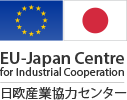

Intellectual Property Rights
— Latest update: April 2024 —
According to the World Trade Organization’s (WTO) definition, Intellectual Property Rights (IPR) are the rights given to a person over their creations. They usually give the creator an exclusive right over the use of his/her creation for a certain period of time. This implies the ownership of:
- Ideas, including literary and artistic (protected by copyright)
- Inventions (protected by patent)
- Signs for distinguishing goods of an enterprise (protected by trademarks)
- Other elements of industrial property, such as utility models and designs
IP is usually divided into two branches, namely industrial property and copyright. Industrial property takes a range of forms, including patents for inventions, industrial designs (aesthetic creations related to the appearance of industrial products), trademarks, service marks, layout-designs of integrated circuits, commercial names and designations, geographical indications and protection against unfair competition. Copyright relates to literary and artistic creations, such as books, music, paintings and sculptures, films and technology-based works (such as computer programs and electronic databases). In certain languages, copyright is referred to as authors’ rights.
World Industrial Property Organization, Understanding Industrial Property, 2016
This section will provide you with more information about the Japanese protection system for intellectual property, the main procedures to follow and the major costs involved.
> Click here for more information about EPA & IPR
Table of Contents
- Legal Framework
- Industrial Property Rights
- Summary Table of Procedures
- Validity and Expiration Dates of IPR
- Patent Rights
- Utility Model Rights
- Design Rights
- Trademark Rights
- Legal Aspects of Copyright Regulation in Japan
- Responsible Courts Dealing with IPR Issues
- What to do in case your IPR is infringed?
- How to obtain the right to use a protected IP?
- Annual Reports & webinars
- Further Reading
- Relevant Organisations and Trade Fairs









